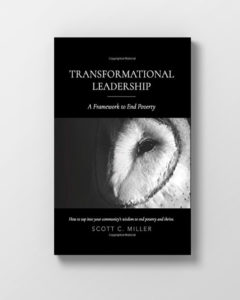Refining your Personal Learning Agenda
We are each having a certain level of impact on the world around us. The Transformational Leadership approach assumes we are ready and eager to make a more significant impact in order to bring about the vision for our life and the world we want.
Upon further exploration, my inner voice told me more about my personal learning agenda:
I need to regularly clean out the mental clutter and hone my ability to laser-focus on my priorities. The move to my smaller home cleared clutter from my environment. Moving to four days a week with Circles USA freed up time and energy to focus on activity that is in alignment with my emerging new vision. Writing this book is reinforcing the ideas that are most important to me at this time in life. My new project with Transformational Leadership is a bridge to a more authentic experience and expression of self. I am learning how to be happier and more effective.
The following “curriculum” might work for your next stage of development as well:
- Affirm and act on your personal freedom in each day and in each activity.
- Ask yourself regularly, “What do I want to do? Are there any “shoulds” I can identify and clear away?
- Measure success by the amount of time and joy spent on meaningful activity versus how much money is made.
- Change routines by inserting new and adventurous activity that generates more joy and enthusiasm for life.
- Develop structure to increase accountability to pursue high-impact strategies.
- Commit to developing and following through on a strategic plan for both Circles USA and Transformational Leadership. Ask colleagues to help you stay focused on the plan, changing course only by intention, not through any delay pattern.
- Build regular check-ins with those who also like to stay on track.
- Do the essential but sometimes uncomfortable work of a clear and courageous evaluation of our weaknesses, unhelpful default patterns, and shadow selves. This might involve interviewing loved ones or trusted colleagues or working with a counselor. Including a plan to address “opportunities for growth” only strengthens our personal power. Keeping an open heart and the courage to be humble makes us better leaders.
- Clear out the clutter in relationships and activity.
- As soon as it becomes clear that a client is no longer in alignment with achieving the transformational vision that you are pursuing, let go, and align with those who are. Each week assess which activities produced the most joy and which did not. Commit to creating a more joyful set of activities for next week.
Self-Reflection Questions
- Ask yourself again—and this time tuning into your heart a bit more deeply—what do I need to learn next in order to increase my capacity to change my life and change the world?
- How can my Allies help hold me accountable to continuing my journey and achieving the milestones I have identified?
- Who knows me well enough to provide loving but honest feedback?
- What do I find most personally challenging, and do I know anyone who is accomplished in areas where I know I have room for improvement? Am I willing to ask for support?
Other People’s Learning Agendas
Additionally, those who align with our visions and participate in our programs will form their own learning agendas, so we must be prepared to help them find the right people who can facilitate their learning. They will first need to understand best practices elsewhere that might be implemented locally. What training programs and support systems can be tapped into to help them learn their new roles? Secondly, they need to learn what they personally must know, be, and/or do differently in order to play their roles effectively.
Learn more: Transformational Leadership: A Framework to End Poverty ~ By Scott C. Miller
To learn more about Scott Miller, please see his website here.

